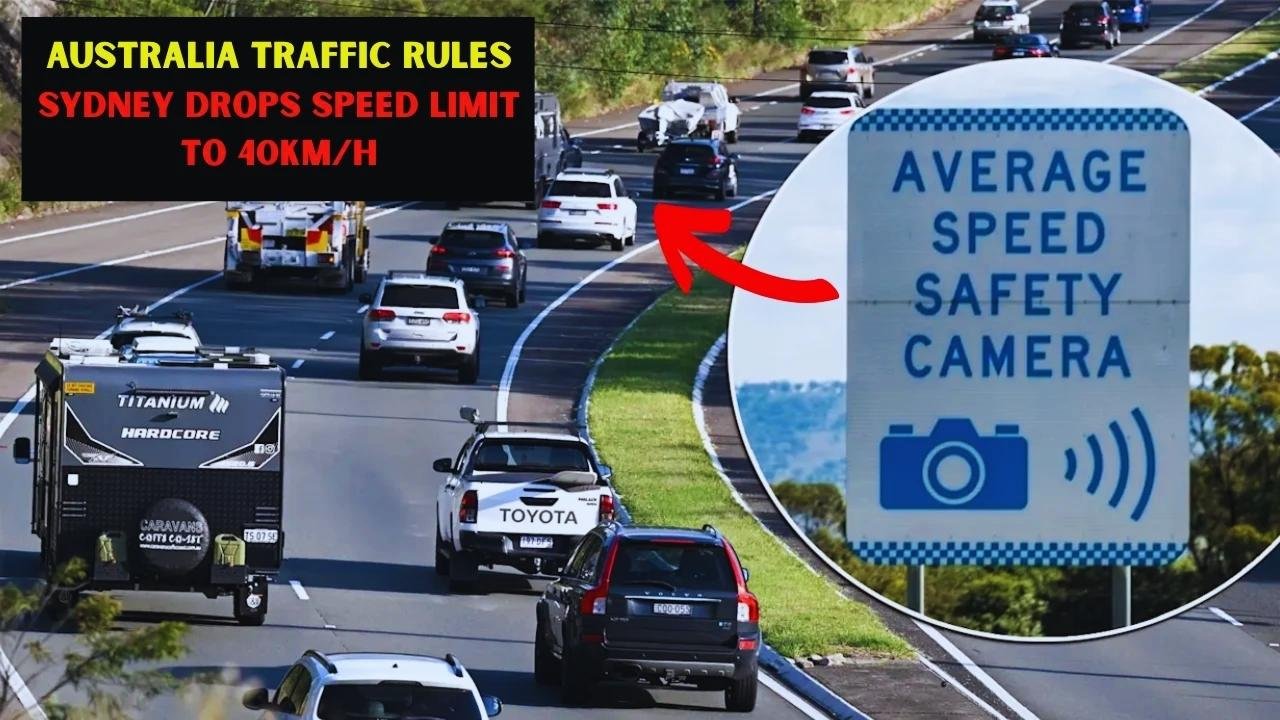Sydney is taking a major step to improve road safety and urban living by reducing speed limits in key areas to 40 km/h. The move is aimed at protecting pedestrians, reducing accidents, and supporting a cleaner, quieter, and more environmentally friendly city. With this initiative, Sydney joins global cities like London and Stockholm that have adopted lower urban speed limits to enhance safety and livability.
Why the 40 km/h Limit Matters
Reducing speed in crowded areas has multiple benefits:
- Better reaction time: Drivers have more time to respond, lowering the severity of crashes.
- Pedestrian safety: Streets become safer, particularly near schools, parks, and town centers.
- Lower emissions: Slower speeds reduce noise and pollution, improving urban air quality.
- Encourages active travel: Safer streets promote walking and cycling.
Areas Affected by New Speed Limits
| Area | Previous Limit | New Limit | Reason |
|---|---|---|---|
| Inner West (residential) | 50 km/h | 40 km/h | Enhance pedestrian safety |
| Canterbury-Bankstown (town centers) | 50 km/h | 40 km/h | Pedestrian-friendly zones |
| Regional Roads (Inner West) | 60 km/h | 50–40 km/h | Safer traffic environment |
The Inner West streets, including Newtown, Enmore, and Marrickville, are now under the 40 km/h limit. Key town centers in Canterbury-Bankstown, such as Earlwood, also follow the new limits. Some regional roads have been reduced from 60 km/h to 50 km/h or 40 km/h, with the city considering 30 km/h zones in the busiest pedestrian areas.
Public Reception and Challenges
- Supporters: Road safety advocates praise the changes, noting the potential for fewer accidents and safer walking and cycling environments.
- Critics: Some drivers and transport groups worry about congestion and longer commute times. Politicians are also weighing safety versus traffic flow concerns.
Despite mixed opinions, early data shows calmer traffic and fewer severe collisions in reduced-speed areas.
Environmental and Safety Benefits
- Safer streets: Lower speeds reduce crash severity and prevent fatalities.
- Less noise pollution: Slower traffic means quieter neighborhoods.
- Cleaner air: Reduced vehicle emissions improve local air quality.
- Enhanced community spaces: Streets become more pedestrian and cyclist-friendly, supporting Sydney’s Movement and Place program.
Future of Sydney Traffic Policy
Sydney plans to continue reducing speed limits and expanding 30 km/h zones in high pedestrian traffic areas. Additional investments in cycling lanes, safer crossings, and traffic calming measures are expected. Public awareness campaigns are underway to educate drivers on the benefits of lower speed limits and safer urban streets.
FAQs
Q1: Why was the 40 km/h limit introduced?
A: To improve pedestrian safety, reduce accidents, lower noise and pollution, and encourage walking and cycling.
Q2: Which areas are affected?
A: Most local roads in the Inner West, town centers in Canterbury-Bankstown, and some regional roads where limits have dropped from 60 km/h to 40–50 km/h.
Q3: Will there be further reductions?
A: Yes, Sydney plans additional 30 km/h zones in busy pedestrian areas.
Q4: How does this benefit the environment?
A: Slower speeds reduce vehicle emissions and noise, contributing to cleaner air and a more pleasant urban environment.
Q5: Are these changes permanent?
A: The limits are part of a long-term urban planning strategy and may expand as more pedestrian-friendly zones are introduced.
Conclusion
Sydney’s new 40 km/h speed limits mark an important step toward safer, quieter, and greener streets. By prioritizing pedestrians, cyclists, and public health, the city is shaping a future where streets are designed for people—not just cars. These measures encourage active travel, reduce accidents, and make urban life more enjoyable for everyone.




